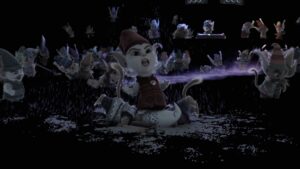
Kurt Russell returns as Santa Claus in The Christmas Chronicles: Part 2, Netflix’s follow-up to Chris Columbus’ 2018 film about the Spirit of Christmas and Santa Clause “true believers.” In this film, which features a more prominent role for Russell’s wife Goldie Hawn as Mrs. Claus, a disgruntled elf known as Belsnickel (Julian Dennison) plots to be the Grinch who stole Christmas by kidnapping a true believer adolescent, Kate (Darby Camp) and unleash a plan to rob the North Pole of its singular magic.
The sequel is even more action-packed than the original, including a lot of the soft violence and hijinks that characterize Columbus’ work. From start to finish, Part 2 is covered in dazzling visual effects and animation necessary to bring to life the various characters and settings for the picture. These include over 600 unique little elves that do Santa’s work—and then wreak havoc when infected by Belsnickel; all of Santa’s reindeer—including a critically wounded one; and a Yule Cat known as Jola. It also includes the village in the North Pole itself, and fast-paced Santa sleigh action sequences.
To take on the herculean task, Columbus relied heavily on Weta Digital, the New Zealand visual effects company founded by Peter Jackson. The Weta team was led by the film’s VFX Supervisor, Martin Hill, an Oscar nominee for his work on Ridley Scott’s Prometheus and the recipient of a 2014 AMPAS Sci-Fi Tech Oscar. It also involved Animation Supervisor Nick Stein, who has worked on films as varied as Avengers: Endgame and Alita Battle Angel. Together, they led a team of hundreds of collaborators that participated in every aspect of the VFX work on the film, from storyboarding and concept design to final image, creating 782 VFX shots in all.
Below The Line recently spoke to Hill and Stein (from New Zealand) about their standout effects and animation work on Christmas Chronicles 2.
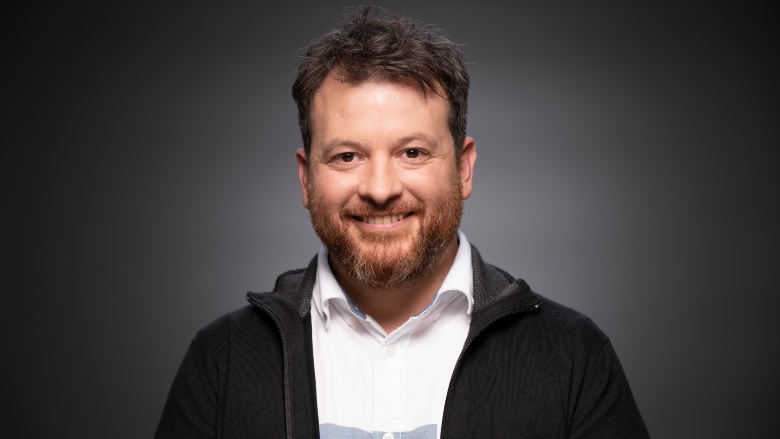
Below The Line: Congratulations on your film! Talk to us about whether you produced a lot of previs and techvis for the film, and can you explain what roles do they play in the creation of the film?
Martin Hill (VFX Supervisor): We got involved very early on in the filmmaking process, as early as April 2019. We go back to the animation theme, the previs theme. Previs is basically an animated story board in its most rough form. It’s 3-D animation, but it’s not presentation quality—it’s rough, there is no fur or hair on the cameras—but it helps figure out where the camera needs to be, and to set the pacing of the film. It if super useful to take that as far as we can and refine it, so that when we go onto set, we know where and how to shoot. There is a sort of commitment in pre-production to the previs, to how it’s going to be.
One of the greatest things of working with Chris Columbus is that he is very good at making decisions, so when we create the previs that ends up being a lot of the times what shots end up in the film, which saves a lot of post-production time.
Techvis is a bit different. It’s for technically complicated stuff on stage—say you have your actors, and like Kurt Russell is flying around, or the sleigh is supposed to move at 60 mph (which it can’t do on the blue screen)—we prepare where the sleigh is going to be framed, and work backwards from that, what do we need the cameras or lighting to do. Then we export all of that into the computer to control the techno-crane cameras, for example.
What was really good was that we were very open and flexible about timings on those elements. So if Chris wanted to drop an extra line for Kurt, or Kurt had another reaction we didn’t expect, we still had flexibility to adjust without needing to move what was on the stage.
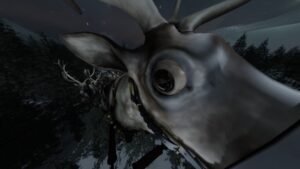
BTL: Talk to me about the process of creating the various elves—they’re cute and funny and critical for some of the most didactic scenes. How do you create 600+ unique elves, and ensure that they are in fact different?
MH: The first thing we do is make sure they are sitting in the world in the way we want them to look. Chris was very clear early on he wanted to feel them grounded, and not cartoony in the film. You want them to fit in. It was a huge task because they are 1 to 2 feet tall and obviously cannot be real.
But that was our starting point. We put a lot of work into the detailing of them, their hair, their characters, and a lot of detail into how the move and how they look. Then we wanted to add more fun into it—bring back more cartoony elements so that they could defy physics, and have their eyes bulge out, and do other things more comedic and fun for the kids. So you take the baseline of something that is real and can sit on the dining table, and then have those same elves fly 300 feet in the air when they are hit by a lollipop.
Nick Stein (Animation Supervisor): In terms of the motion and animation, we had the first movie to go back to for reference. There were a lot of characters in the first one, including some that did not make it into the sequel. So we elaborated a bit further on these characters, creating what we call a “character bible” on each of the hero elves, giving them actual tasks and jobs. We have for example “Nina” as the leader of the workshop elves. This gave the artists a good starting point on the personalities of the elves, and how they can move.
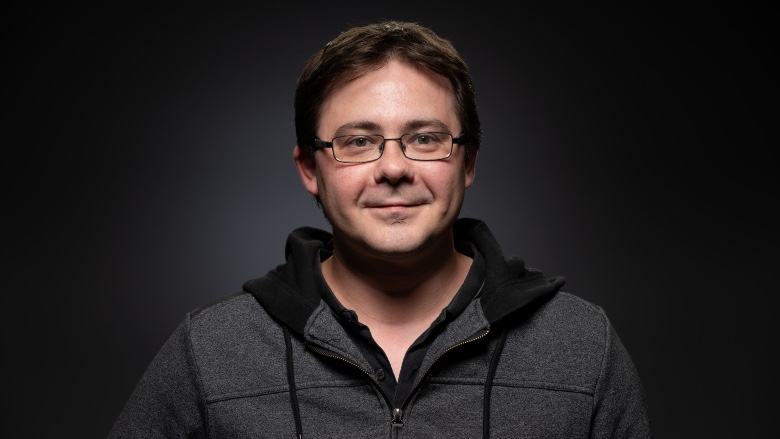
MH: Right. We have the script, but to give every character consistency, we gave each elf a story that we ran by the filmmakers and that we could use.
In terms of making them different—every element has a different skeleton that has to be animated in a different way. We started with the hero 8 or 9 elves, then we went to the “background elves” (though they could come right up to the camera), and then from there we created “sibling elves” and varied their hair, and beards, and costumes, and even colors of customers. From one elf you could make an entire crowd with these variations, and it would take a while to tell that they were all coming from the same elf.
We also had the forest elves, the antecedent to the forest elves, and they are a bit more feral, their furs are a bit more massive, maybe hessian furs. To create them we took our North Pole elves and our grooming animators gave their hair different looks, and also took our heroes elves and made them slimmer and gave them different costumes.
BTL: What about some of the other creatures, like the reindeer and the Yule Cat, and the Jackalotes [who pull Belsnickel’s sleigh]?
MH: The reindeer are the proud, stoic beasts. By contrast Belsnickel’s image is quite sort of steam-punky, and a bit cobbled together. His sleigh is made up of bits and pieces. The idea for Jackalotes was the cross between a jackal and a coyote. We wanted to make them a bit intense and crazy. Chris actually has a French bulldog that went into him with the set, and he said he wondered if we could get a bit of them in there. They were a lot of fun to animate.
NS: From the motions standpoint we took the same approach of giving them personalities. We had the manic one, the grumpy one who does not really want to run all that much, and the one who keeps nibbling on the other one’s ear. It was very fun to build that sort of animation with variation into the film.
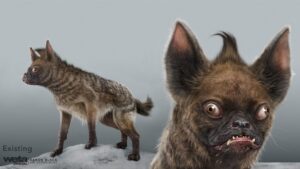
MH: Right, and you can make them look different but animate the same way, they end up looking the same. It is important to have different cadence in their movements and things like that, when you are thinking about the animation.
NS: We had the same thing with the reindeer. Dasher plays an important role in the movie and we wanted to make him easily recognizable, particular for that stand-off scene with the Yule Cat.
MH: Right, and we have the reindeer but also the aggressive Yule Cat Jola, so we tried to use their different personalities. There’s a moment when the reindeer are flying and we have the camera move in close to see their eyes widen in panic, sort of a comedy moment. There’s also a part with Jola where we anthropomorphize him to make him shake his head at the scene of elves dancing.
BTL: Where there any challenges in putting it all together, or something that proved particularly difficult in the process?
MH: One of the big challenges here was the range of work and the range of moods. This movie is dark at times, but there’s fast-paced action scenes, and then there are comedy moments. But one of the things that was helpful was to spend a lot of time with the Art Department on the previs to nail the looks of the various characters to make sure what we were progressing with in animation through the composites and the final shots, we knew we had a solid foundation to work with.
NS: From a motion standpoint, a particular scene comes to mind called “Rambo Run” where Chris wanted to have a lot of bombs and other stuff going on. Underlying it we wanted to have something for the audience to work through the sequence, so we looked at gremlins and wide shots at those, while we had the elves in the background doing all sorts of crazy stuff.
BTL: Did you learn anything new about the process that you may incorporate in future work?
NS: From a motion standpoint, we learned a lot about how to build in both the facial and body puppets the cartoony expression while being grounded on a more muscle/realistic based system. The challenge was to find the balance—systems and tech wise our systems were able to hold up and dial it up to eleven, which was awesome.
MH: The planning. Having been able to plan and commit to shots and have integration between the CG and the plates aspects. It was very helpful to our work.
The Christmas Chronicles: Part 2 is currently streamlining on Netflix.
All photos courtesy of Netflix and Weta Digital.





